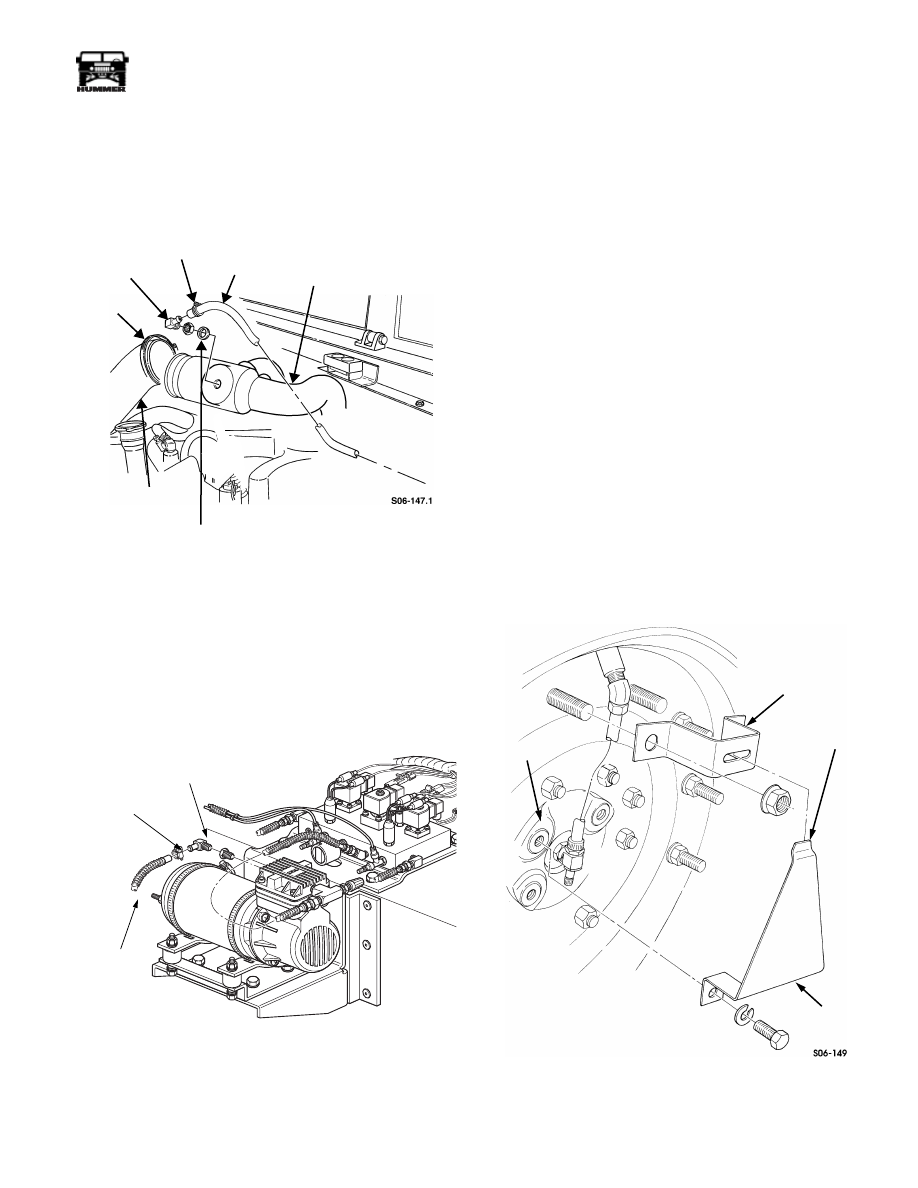Hummer H1 (2002+). Manual - part 109

______________
Wheels and Tires/Central Tire Inflation System (CTIS) 6-51
®
05745159
AIR INTAKE LINE REPLACEMENT
Removal
1.
Raise and secure hood.
2.
Loosen hose clamp and disconnect air intake hose from
connector (Figure 6-73).
Figure 6-73: Air Intake Hose
3.
Loosen clamp and disconnect air cleaner elbow from air
horn.
4.
Remove nut, washer, coupling, connector, and seal from
air horn.
5.
Loosen hose clamp securing air intake hose to compressor
fitting (Figure 6-74).
Figure 6-74: Air Intake Hose to Fitting
6.
Remove air intake hose.
Cleaning and Inspection
Clean and inspect air intake hose, elbow, coupling assembly
and seal. Check for leaks, cracks, and stripped threads.
CAUTION: Do not allow sealant into air system. Sealant will
damage CTIS components.
NOTE: Apply sealant to threads prior to installation.
Installation
1.
Connect air intake hose to compressor fitting and secure
with hose clamp (Figure 6-74).
2.
Install seal, coupling, washer, nut, and connector to air
horn (Figure 6-73).
3.
Connect air cleaner elbow to air horn and secure with
clamp.
4.
Connect air intake hose to air horn connector and secure
with hose clamp.
5.
Lower and secure hood.
TUBE SHIELD REPLACEMENT
1.
Remove bolts, washers and tube shield from wheel.
2.
Install new CTIS decal on tube shield, if necessary.
3.
Install tube shield tab into slot on bracket.
4.
Secure tube shield to spindle with bolts and washers.
Figure 6-75: Tube Shield Assembly
AIR
INTAKE
HOSE
AIR
HORN
SEAL
ELBOW
CLAMP
CONNECTOR
CLAMP
9-S06-012
CLAMP
FITTING
AIR INTAKE
HOSE
TAB
TUBE SHIELD
SPINDLE
BRACKET